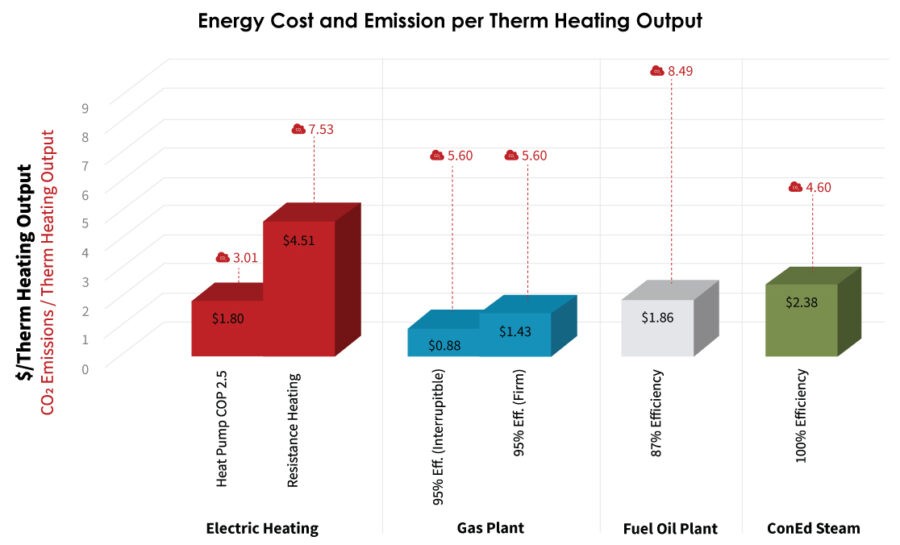
As the world struggles to reduce our impact on the environment, Loring leads the way by designing and implementing strategies to utilize renewable energy sources and reduce the carbon footprint where we live and work. New codes and standards assist our efforts by pushing owners, utility companies, institutions, and city agencies to find ways to reduce greenhouse gas emissions. Loring is working with our clients to study, design, and implement electrification and decarbonization strategies for new and existing buildings and campuses.
Codes and Standards
Many states and cities in the USA have begun implementing plans to reduce their carbon emissions. For example, New York City’s 80×50 initiative is an aggressive plan to reduce carbon emissions by 80% by 2050 from a 2005 baseline. In 2016, buildings alone contributed approximately 67% of New York City’s emissions. These emissions must be curtailed significantly in the years to come to achieve the city’s 80×50 goals. One catalyst to encourage owners to reduce the carbon output in buildings is through Local Law 97, which imposes a fine on buildings that exceed their allowable tons of carbon emissions on an annual basis. The Local Law increasingly lowers the allowable carbon emission thresholds over time to compel owners to develop long term strategies to lower carbon footprint while simultaneously reducing or eliminating penalties.
Loring aids our clients by researching incentives available through federal, state and local governments, and local utility companies and by helping property owners make the transition to an electrified building less expensive and more desirable. Loring works in conjunction with our clients to develop a cost effective and workable strategies to electrify their space, building, or portfolio.

Selecting Electrification Equipment
There are many different electrified systems and there are multiple factors that must be considered when choosing the best system for a building. For example, apartment buildings typically have an air conditioning system that serves each apartment with individual controls and separate metering. In these instances, a packaged terminal heat pump (PTHP) or a Variable Refrigerant Flow (VRF) system are great options.
For other larger, commercial and institutional buildings, a centralized system may be more appropriate. A centralized plant typically provides chilled and hot water throughout the building to terminal units which provide the heating and cooling. Both the hot and chilled water in the building is provided by heat pumps capable of switching between either the heating or cooling modes depending on the building loads. These heat pump systems can either be water or air cooled. Air-Cooled Heat Pumps are the most common, but when the building sits on a larger site, a geothermal loop can be considered, and a Water-Cooled Heat pump can provide heating and cooling in a more sustainable and less energy consuming way.

Comparing Utility Costs and Emissions
In many areas of the country, it costs more to produce the same amount of heat using an electrified system than it does to utilize a traditional gas system. For this reason, it is very important to utilize an efficient electrified system. Using electric resistance heating can be two to four times more costly than using a comparable heat pump system, depending on the heat pump’s efficiency. The chart below shows a comparison of difference in energy cost and CO2 emissions, depending on the utility rates (per therm of heating output).

In regions where the electric grid is expected to become fully decarbonized in the future, buildings with electrified systems will see a decreasing carbon footprint, ultimately achieving net-zero carbon performance. It is this future expectation that underscores the importance of adopting efficient electrified systems today to significantly reduce building emissions in the long term.
Summary
The world needs solutions to reduce our reliance on natural resources, reduce greenhouse gas emissions, and to move toward a more sustainable future. Loring Consulting Engineers is incorporating sustainable solutions into the built and living environments without compromising building performance and tenant comfort. We are partnering with other leaders in decarbonization and electrification to help reduce greenhouse gas emissions and foster engineering solutions that promote environmental stewardship.
Authors
Miguel Gaspar is a Principal and Lucas Smilios is an Associate at the New York office.